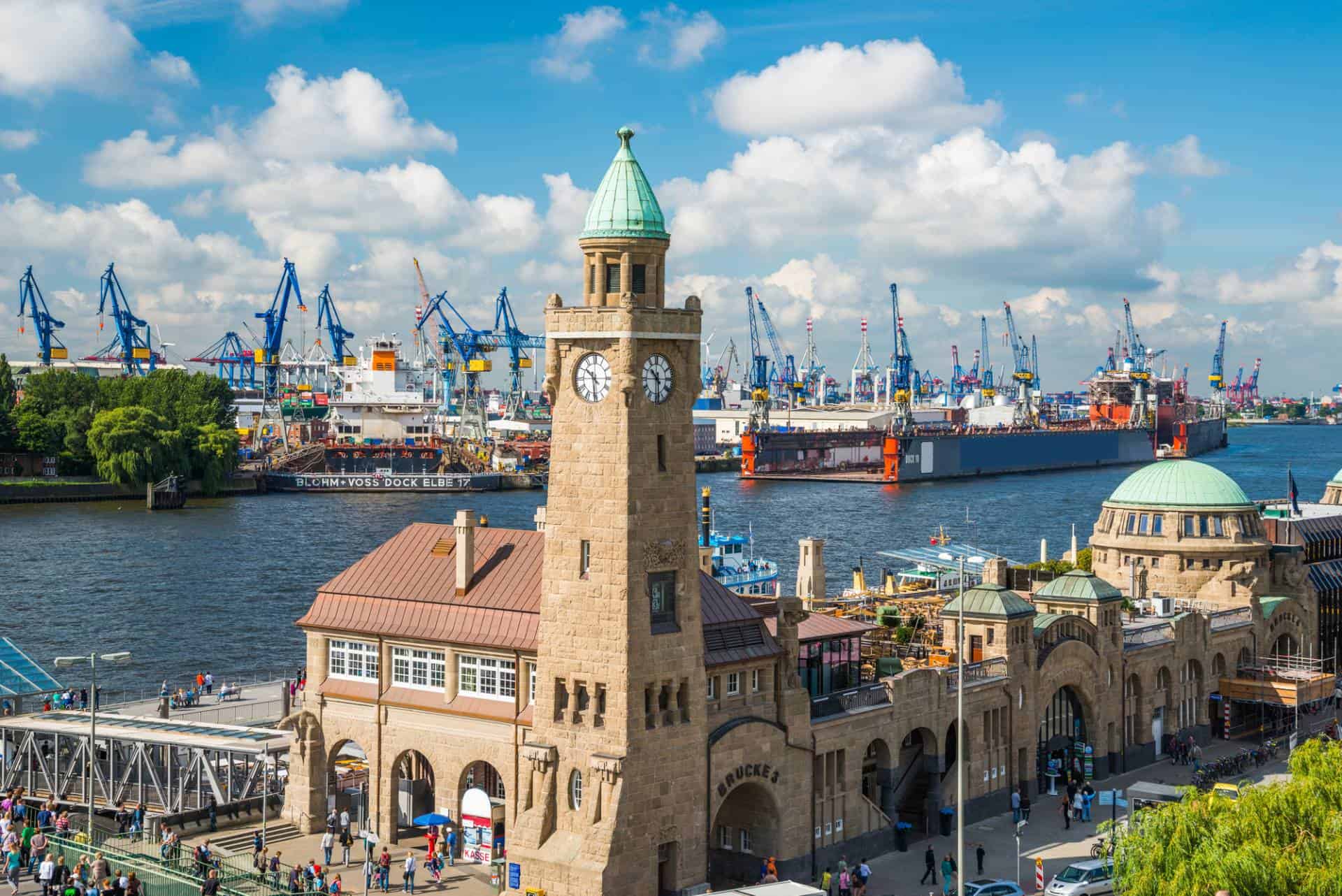
Busiest Ports in Europe
The following are measured in a term called TEU’s, which stands for “Twenty-foot Equivalent Units,” the principle system for which cargo containers are counted by.
- Port of Rotterdam, Netherlands: Located in the Netherlands, the Port of Rotterdam is the largest port in Europe and one of the busiest in the world. It serves as a major gateway to Europe for goods coming from Asia and the Americas.
- Port of Antwerp, Belgium: The Port of Antwerp is the second-largest port in Europe and is situated in Belgium. It is known for its strategic location along the Scheldt River and serves as a major hub for container traffic, chemicals, and petrochemicals.
- Port of Hamburg, Germany: The Port of Hamburg is the third-largest port in Europe and is located in Germany. It is a key transportation hub for goods entering and leaving Central Europe, particularly via the Elbe River.
It's advisable to consult up-to-date sources for the most current information on port rankings and activity.
Among the bustling seaports that underscore Europe's pivotal role in global trade, the Port of Barcelona stands out as one of the top container ports in Europe. Its significant volume of container throughput highlights its strategic importance in Mediterranean maritime routes, reflecting the dynamic nature of trade flows through this region. Alongside, the Hamburg Port in Germany distinguishes itself not only by its sheer size but also by its sophisticated infrastructure, facilitating a seamless connection between maritime and inland logistics networks. These ports, alongside other leading European ports by size, such as the Port of Rotterdam and the Port of Antwerp-Bruges, exemplify the continent's maritime prowess, serving as crucial nodes in the intricate web of global supply chains. Their combined activities underscore Europe's enduring significance in the arena of international trade, reinforcing its status as a major hub for cargo movement across continents.
The European maritime landscape is distinguished by its bustling ports, serving as crucial nodes in the global supply chain and facilitating a significant portion of world trade, especially in container shipping. Among these, the Port of Rotterdam stands out as not only one of the busiest European ports but also as one of the largest ports in the world. Its strategic location and advanced infrastructure make it a pivotal maritime hub, handling immense container volumes that underscore its critical role in international logistics and trade.
Another key player is the Port of Antwerp-Bruges, formed from the integration of two Belgian ports, which has quickly ascended the ranks to become one of the largest ports in Europe. This port is renowned for its container handling capabilities, with a throughput in 2022 that marked a substantial increase compared to 2021. The Antwerp port segment of this merged entity has long been celebrated as a "gateway to the world," facilitating trade and specifically container shipping in European waters with unmatched efficiency.
The Port of Hamburg, often dubbed Germany's "gateway to the world," further cements Europe's position at the crossroads of global trade. This German port, with its two container terminals, has consistently been among the top 5 ports in Europe by size and activity. Its container volumes in recent years highlight Hamburg's essential role in the European container port landscape, managing the logistics needs of both the continent and the wider world with remarkable adeptness.
The Port of Piraeus, the largest port in Greece, showcases the dynamic growth of maritime ports outside the traditional Northern European axis. Under the stewardship of the Piraeus Port Authority, partly owned by COSCO, this port has emerged as one of the fastest-growing ports in Europe. Its strategic significance is amplified by COSCO's investment, turning Piraeus into a pivotal gateway for Asian goods entering Europe, further bolstered by its impressive TEU handling capacity.
Spain's contribution to the European maritime sector is notably marked by the Port of Valencia and the Port of Algeciras. The Port of Valencia, managed by the Port Authority of Valencia, is recognized for its significant container throughput, establishing it as a critical hub for Mediterranean and global maritime trade. Similarly, the Port of Algeciras, with its strategic position near the Strait of Gibraltar, serves as a key transit point for shipping routes connecting Europe to Africa and Asia, underscoring its importance in the busiest sea corridors in the world.
The Port of Felixstowe, the UK's busiest container port, and the Port of Gioia Tauro in Italy, further illustrate the diversity and strategic importance of European ports. Felixstowe serves as the United Kingdom's primary link to global maritime trade, with its well-established container terminals. Meanwhile, Gioia Tauro offers a testament to Italy's role in the Mediterranean trade routes, capitalizing on its geographic position to facilitate cargo movement across the region.
European ports like Marseille, Bremerhaven, and Le Havre also play significant roles in the continent's maritime economy. The Port of Marseille stands as an important container port in France, contributing to the Mediterranean's trade dynamics. Bremerhaven, another German port, complements Hamburg's operations, focusing on automotive and container shipping. Le Havre, part of the HAROPA port complex in France, merges traditional and modern shipping needs, connecting Europe to global markets.
In conclusion, Europe's ports, from Rotterdam and Antwerp-Bruges to Piraeus, Valencia, and Algeciras, form the backbone of the continent's maritime trade infrastructure. These ports not only facilitate the movement of goods across borders but also drive economic growth, innovation, and connectivity on a global scale. Their strategic locations, combined with cutting-edge technological advancements, ensure that Europe remains at the forefront of international trade, with its ports serving as vital gateways for cargo movement worldwide. As the global supply chain continues to evolve, the significance of these maritime hubs is set to increase, highlighting their role in shaping the future of global commerce.










